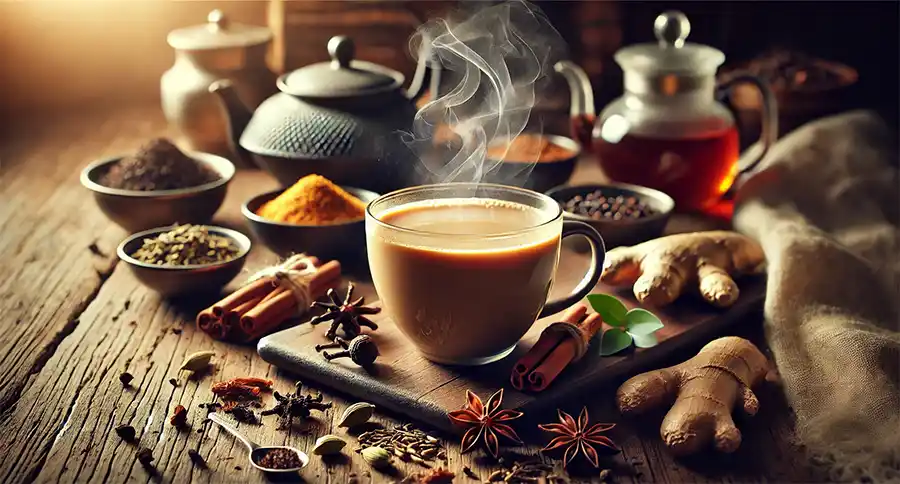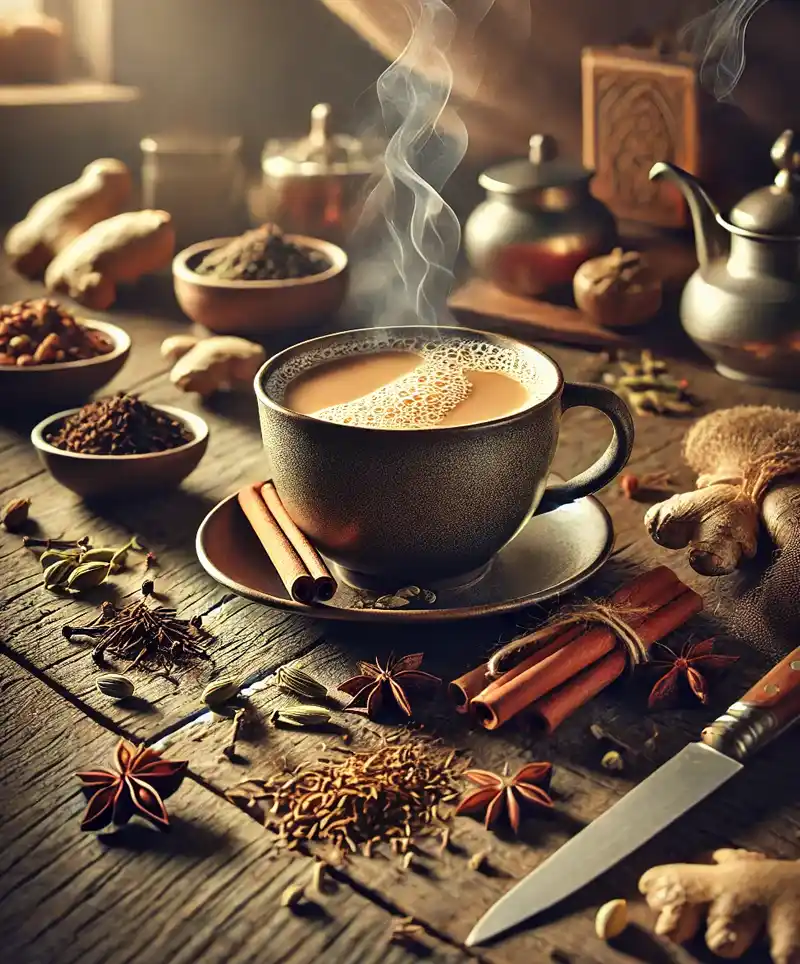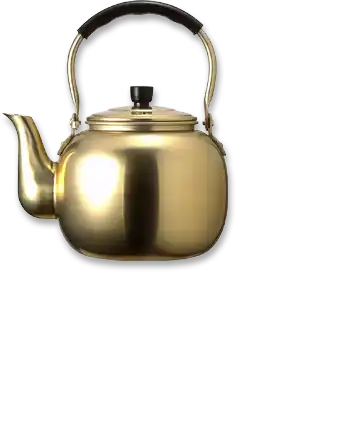A Little Bit of Magic in Every Cup
There’s something undeniably magical about chai – that perfect blend of tea, spices, and warmth that feels like a cozy hug for your soul. Whether you're sipping it in the bustling streets of Mumbai or curled up on your couch with a good book, chai has the power to transform an ordinary moment into something extraordinary. And what better day to celebrate this soothing concoction than on National Chai Day, a time to raise our cups and honor the spicy goodness that has conquered hearts (and taste buds) around the world?
What Is Chai, Exactly?
First things first: Let’s clear up a little misconception. In many parts of the world, chai is often referred to as “chai tea.” But here’s the thing – “chai” means tea. So, technically, calling it “chai tea” is like saying “tea tea.” While that sounds like a delightful stutter, it’s really just a redundancy. The proper term is simply chai, which refers to the delightful spiced tea that has become synonymous with warmth and comfort.
The classic version of chai, known as masala chai, is a fragrant brew made by steeping black tea with a medley of spices, milk, and sugar. But what spices, you ask? That’s where things get a bit personal. The beauty of chai lies in its flexibility. Traditional spices often include cardamom, cinnamon, ginger, cloves, and black pepper, but you’ll find that everyone – from street vendors to your neighbor with a tea obsession – has their own secret mix.
A Brief History of Chai
The origins of chai date back thousands of years, to a time when spices were as valuable as gold (and sometimes, just as hard to get). In ancient India, the tradition of using spices for medicinal purposes was common. Ayurvedic texts from around 5000 years ago reference various spiced brews, though these early versions of chai didn’t include tea leaves. They were more medicinal concoctions meant to warm the body and promote health.
 It wasn’t until the British East India Company established tea plantations in Assam during the 19th century that tea became a major part of the Indian chai experience. The British, being the tea connoisseurs they were, wanted to rival the Chinese tea trade, so they encouraged the cultivation of tea in India. Over time, locals began mixing this new, bitter black tea with spices, milk, and sugar – the rest, as they say, is history. Or in this case, a deliciously spiced beverage.
It wasn’t until the British East India Company established tea plantations in Assam during the 19th century that tea became a major part of the Indian chai experience. The British, being the tea connoisseurs they were, wanted to rival the Chinese tea trade, so they encouraged the cultivation of tea in India. Over time, locals began mixing this new, bitter black tea with spices, milk, and sugar – the rest, as they say, is history. Or in this case, a deliciously spiced beverage.
What Makes Chai So Special?
You might think chai is just tea with a sprinkle of cinnamon, but that would be like calling pizza just bread with some stuff on it. No, chai is a symphony of flavors that come together in perfect harmony. Each spice brings its own personality to the mix, and while the exact blend can vary, here’s a breakdown of the stars of the chai show:
- Cardamom: The aromatic diva of the group. Cardamom is floral, sweet, and the first thing that hits your senses when you take a sip of chai.
- Cinnamon: Warm and comforting, cinnamon is the spice that makes you feel like everything is going to be okay – even if you’ve just burned your toast.
- Ginger: Bold and zesty, ginger gives chai its signature bite. It’s the spicy kick that says, “Wake up! You’re drinking chai, not dozing off!”
- Cloves: Tiny, but mighty. Cloves add a deep, slightly peppery flavor that rounds out the sweetness of the other spices.
- Black Pepper: The unsung hero of chai. Black pepper adds just the right amount of heat to balance out the sweetness and creaminess of the tea.
Of course, there are countless other spices that can make their way into a chai blend – from nutmeg to fennel – but this core group gives chai its classic flavor profile.
Brewing the Perfect Cup of Chai
Making chai is both an art and a science. Some might say you just throw the ingredients in a pot and let them simmer, but true chai lovers know that there’s a bit of magic involved. Here’s a quick guide to brewing the perfect cup:
- Boil the Water: Start by boiling water with your spices. This helps release the essential oils and flavors that make chai so fragrant. If you’re using whole spices (which you should), give them a little crush with a mortar and pestle to really let them shine.
- Add the Tea: Once the water is fragrant with spices, it’s time to add your black tea. Assam or Darjeeling works best, but if all you’ve got is an old bag of supermarket tea, it’ll do in a pinch. Steep it to your desired strength.
- Milk It Up: Chai is incomplete without milk. Add whole milk for a creamy finish, or experiment with plant-based alternatives like almond or oat milk for a twist. Bring it back to a simmer.
- Sweeten the Deal: Sugar is a must in traditional chai, but honey or maple syrup can add a unique flavor. Sweeten to taste, but don’t go overboard – you’re making chai, not candy.
- Strain and Sip: Strain your chai into a cup, sit back, and bask in the spicy, warming glow of your hard work. And maybe Instagram it for good measure – #ChaiMaster.

Fun Chai Facts
- Chai’s popularity isn’t just an Indian thing – it’s global! From trendy cafés in New York to tea stalls in Delhi, chai has taken the world by storm. You can even find “chai lattes” at coffee chains, though purists might argue that’s more about froth than flavor.
- Chai can be customized to suit any season. Feeling chilly? Add more ginger for warmth. Hot summer day? Swap out the milk for cold brew tea and serve it over ice. Chai knows no bounds.
- The great chai vs. coffee debate rages on. While coffee lovers cling to their espressos, chai drinkers know that their cup offers the perfect balance of caffeine and calm. Plus, no one ever adds a pinch of cardamom to their macchiato (or if they do, we’d like to hear about it).
Chai in Pop Culture
Chai has worked its way into the hearts (and mugs) of millions, and pop culture hasn’t been shy about its love for this spicy brew. Whether it’s an Indian street vendor pouring steaming cups of chai into tiny clay cups or your favorite YouTube influencer showing off their homemade chai recipe, this humble drink has become an icon of coziness, comfort, and culture.
In fact, there’s even a growing chai subculture, where aficionados debate the merits of using loose-leaf tea vs. pre-ground spices and whether or not you should add a dash of saffron (a splurge, but worth it). Chai has become more than just a beverage – it’s a way of life.
On National Chai Day, there’s no better excuse to brew yourself a cup of this aromatic, spiced goodness. Whether you’re a chai purist or prefer to experiment with new twists on the classic recipe, today is all about celebrating the warmth, flavor, and community that chai brings.
So, take a sip, savor the spices, and toast to a drink that’s stood the test of time, trade routes, and taste buds. Chai, we salute you.
Please Share our Content






 It wasn’t until the British East India Company established tea plantations in Assam during the 19th century that tea became a major part of the Indian chai experience. The British, being the tea connoisseurs they were, wanted to rival the Chinese tea trade, so they encouraged the cultivation of tea in India. Over time, locals began mixing this new, bitter black tea with spices, milk, and sugar – the rest, as they say, is history. Or in this case, a deliciously spiced beverage.
It wasn’t until the British East India Company established tea plantations in Assam during the 19th century that tea became a major part of the Indian chai experience. The British, being the tea connoisseurs they were, wanted to rival the Chinese tea trade, so they encouraged the cultivation of tea in India. Over time, locals began mixing this new, bitter black tea with spices, milk, and sugar – the rest, as they say, is history. Or in this case, a deliciously spiced beverage.









 "Sláinte!" is a traditional Irish expression used as a toast, equivalent to "Cheers!" in English.
"Sláinte!" is a traditional Irish expression used as a toast, equivalent to "Cheers!" in English.